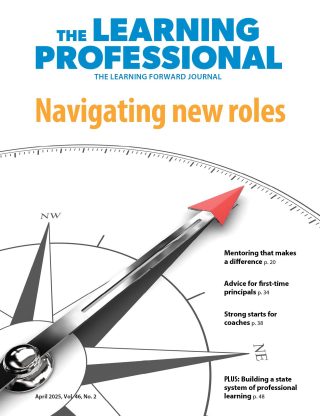FOCUS
Pivotal moments in teaching
Zoom in on specific points to create meaningful learning
By Bradley Ermeling
June 2018
Vol. 38 No. 3
Read the remaining content with membership access. Join or log in below to continue.
Sed ut perspiciatis unde omnis iste natus error sit voluptatem accusantium doloremque laudantium, totam rem aperiam, eaque ipsa quae ab illo inventore veritatis et quasi architecto beatae vitae dicta sunt explicabo. Nemo enim ipsam voluptatem quia voluptas sit aspernatur aut odit aut fugit, sed quia consequuntur magni dolores eos qui ratione voluptatem sequi nesciunt. Neque porro quisquam est, qui dolorem ipsum quia dolor sit amet, consectetur, adipisci velit, sed quia non numquam eius modi tempora incidunt ut labore et dolore magnam aliquam quaerat voluptatem.
EXCERPT FROM ANTICIPATED TEACHER AND STUDENT INTERACTIONS
Teacher: Let’s talk about this painting for a few minutes. Raise your hand and share with the class ONE thing that you noticed in this painting.
Student: I see a SKULL.
Teacher: Why is there a skull? What might the skull represent?
Elicit responses and discuss: death, mortality, the frailty of human life.
Student: I see a SEASHELL thing.
Teacher: What might the seashell symbolize?
Student: The ocean? Baptism? Travel?
Teacher: Who in the 17th century might be able to travel across the ocean?
Student: Rich people? Explorers?
Teacher: Who would get the shell from the explorer? Probably the person who financed his voyage. So what does the shell symbolize?
Student: Wealth.
Teacher: Oftentimes shells once housed a sea creature, so what might the empty shell symbolize?
Elicit comments and discuss: It is a temporary home. We can’t lay claim to the shell any more than a crab could lay claim to it.
Teacher: What else did you notice?
Student: There’s a SWORD.
Teacher: Can anyone tell what kind of sword it is? (It’s a Japanese sword.) What does a sword symbolize?
Student: Violence? Death? Killing?
Teacher: Absolutely! So what is the relationship between the sword and the title of the painting?
Elicit responses and discuss: The might of arms cannot defeat death.
Recent Issues
LEARNING DESIGNS
February 2025
How we learn influences what we learn. This issue shares essential...
BUILDING BRIDGES
December 2024
Students benefit when educators bridge the continuum of professional...
CURRICULUM-BASED PROFESSIONAL LEARNING
October 2024
High-quality curriculum requires skilled educators to put it into...
LEARNING TO PIVOT
August 2024
Sometimes new information and situations call for major change. This issue...












